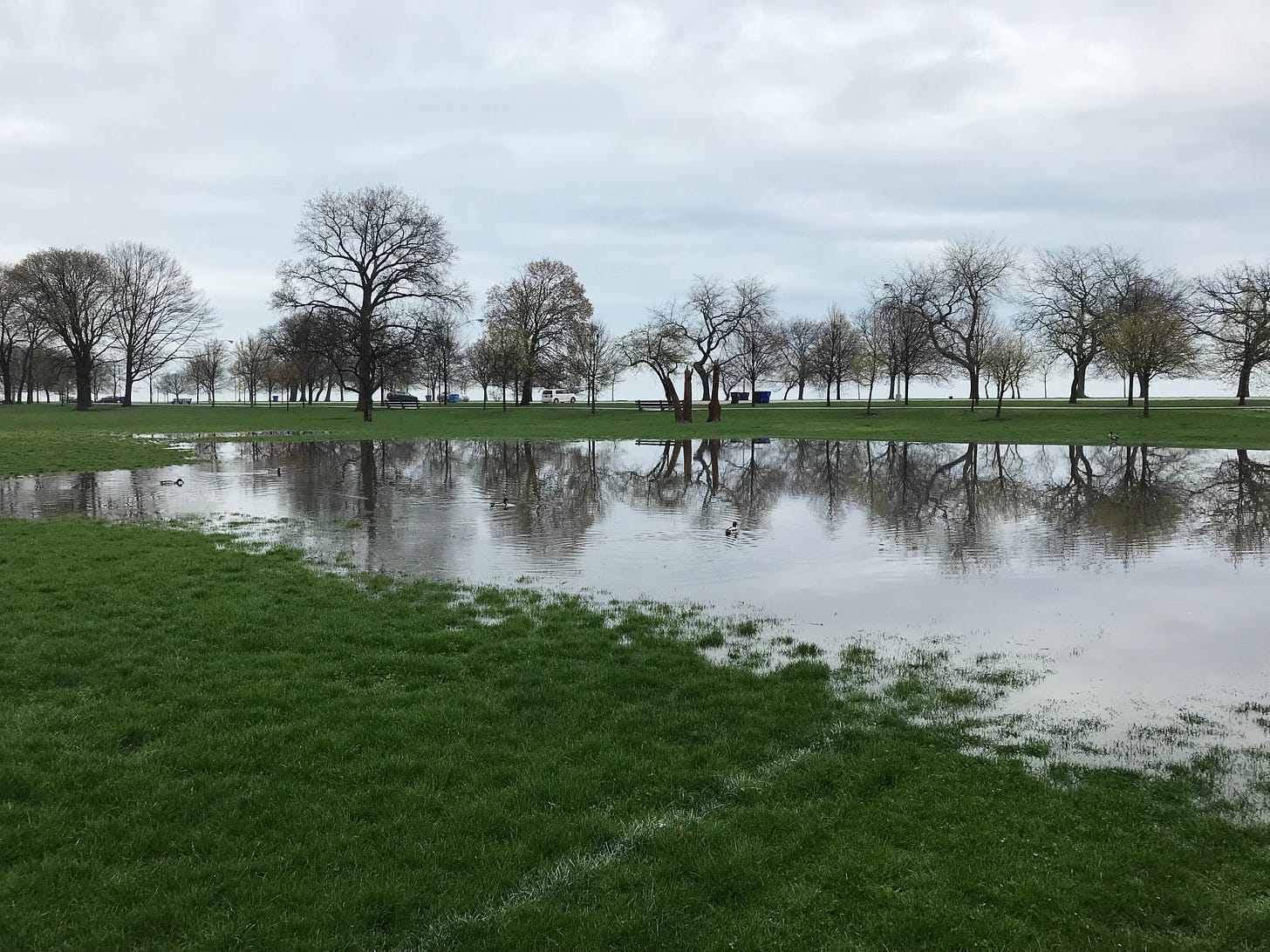What's in a name? Fluddles are a hallmark of springtime
Not quite a flood, and not quite a puddle, these watery areas are surprisingly interesting birding locales
Since the beginning of time—or at least the last glaciation—Illinois has had fluddles. What’s a fluddle, you ask? A portmanteau of flood and puddle, fluddles are made up of standing water in grassy areas and farmland. These aren’t quite puddles, the little watery areas along our curbs and sidewalks, but they aren’t exactly biblical floods either. Sometimes a fluddle covers several hundred square feet, though, or even a few acres. I think of the ballfields in our local forest preserve—at this time of year there are fluddles everywhere, laden with snow melt, spring rains, and runoff. (In the woods, there’s another type of fluddle, the vernal pond.)
Interestingly, the term may have been coined in Illinois and remains widely used here. We’re sort of a fluddle hotspot when you think about it—with thousands and thousands of agricultural acreage becoming fluddles at certain times of year. This is why, for example, Illinois is a critical stopover for species such as the American Golden Plover, which makes the most of fluddles in places like the east-central part of the state twice a year during migration.
Eric Secker wrote this on the Illinois Birders Exchanging Thoughts message board last year:
Jim Frazier used the term since at least 1995 here in Illinois during his time running the DuPage Rare Bird Alert hotline.
It’s a word that is still fairly limited to Illinois.
It’s generally used to describe a flooded area, often in reference to a flooded farm field. It’s too big to be a puddle, but not a pond or lake, and generally more shallow. They are generally temporary, but some exist year-round. If it’s permanent and a lot of vegetation starts to grow up, it might cross over into being called a marsh or wetland. The term tends to be used in areas where their presence is unintended, unwanted, or indirectly results from other activities or management. In natural areas like woodlands, they are more likely to be naturally occurring vernal ponds/pools or wetlands.
Fluddles are obviously important, though. It amazes me how a Solitary Sandpiper—a noted fluddle lover—will utilize an urban fluddle in an otherwise nondescript grassy area. The fluddles must bring worms and other invertebrates to the surface just enough for the sandpiper to enjoy meal after meal.
For me, the most notable fluddle of all is the one at Montrose Beach Dunes that’s proved to be a feeding ground for Monty, Rose, and their chicks these past few years. The watery area has gained enough renown that it was named in a Chicago Park District press release last April. In announcing additional protection for the site, the press release spelled it “floodel,” which entertains me to no end. Presumably “floodel” rhymes with noodle or doodle. It sounds like the name of an obscure part of a Bavarian glockenspiel. But I forgive the press release authors for the understandable mishap on such an odd term. Fluddles are just another quirk of birding and why this pastime is so darn entertaining.



